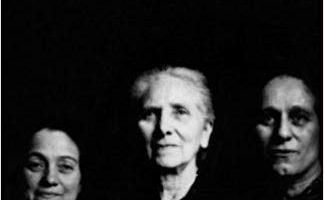Where Credit Is Due
Jewish feminists visiting the Museum of American Jewish History in Philadelphia will find themselves well represented in the museum’s new permanent exhibit, “Creating American Jews: Jewish Identity in America.”
In this show, curator Karen Mittleman paid particular attention to the efforts of Jewish women before the 1970s. She has included a series of letters between 18th-century mothers and children that capture the struggle to remain Jews—and to remain families— while acculturating to a new land.
“What tended to get preserved about men’s experience in those days was their ledger books,” explains Mittleman. “[From women] we have these wonderful, revealing letters,” often written on behalf of the men in their lives as well.
Mittleman, who is trained in woman’s—not Jewish— history, highlights the feminist contribution to Judaism in a section on New Identities. Along with Holocaust consciousness, Soviet Jewry activism and the Six Day War, Jewish feminists are credited with changing the face of American Jewry. They have inspired, she writes, an “outpouring of songs, prayers, poetry, new ritual and scholarly texts, . . . evidence of a revolution in modern Jewish life that is still ongoing.”
Featured in this section is an issue of LILITH Magazine from 1979 with a cover story by Cynthia Ozick and a woodcut, created by Paula J. Goodman, of men studying Torah on the back of a woman.
LILITH has also found a place in the permanent exhibit of the Museum of Jewish Heritage— A Living Memorial to the Holocaust, which opened last year in lower Manhattan, on the shore opposite the Statue of Liberty. The magazine’s premiere issue can be viewed in the section on post-World War II religion.


